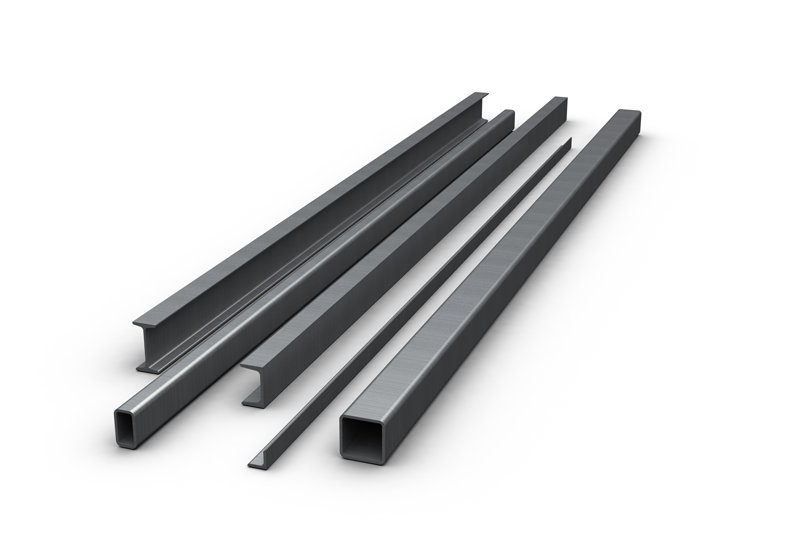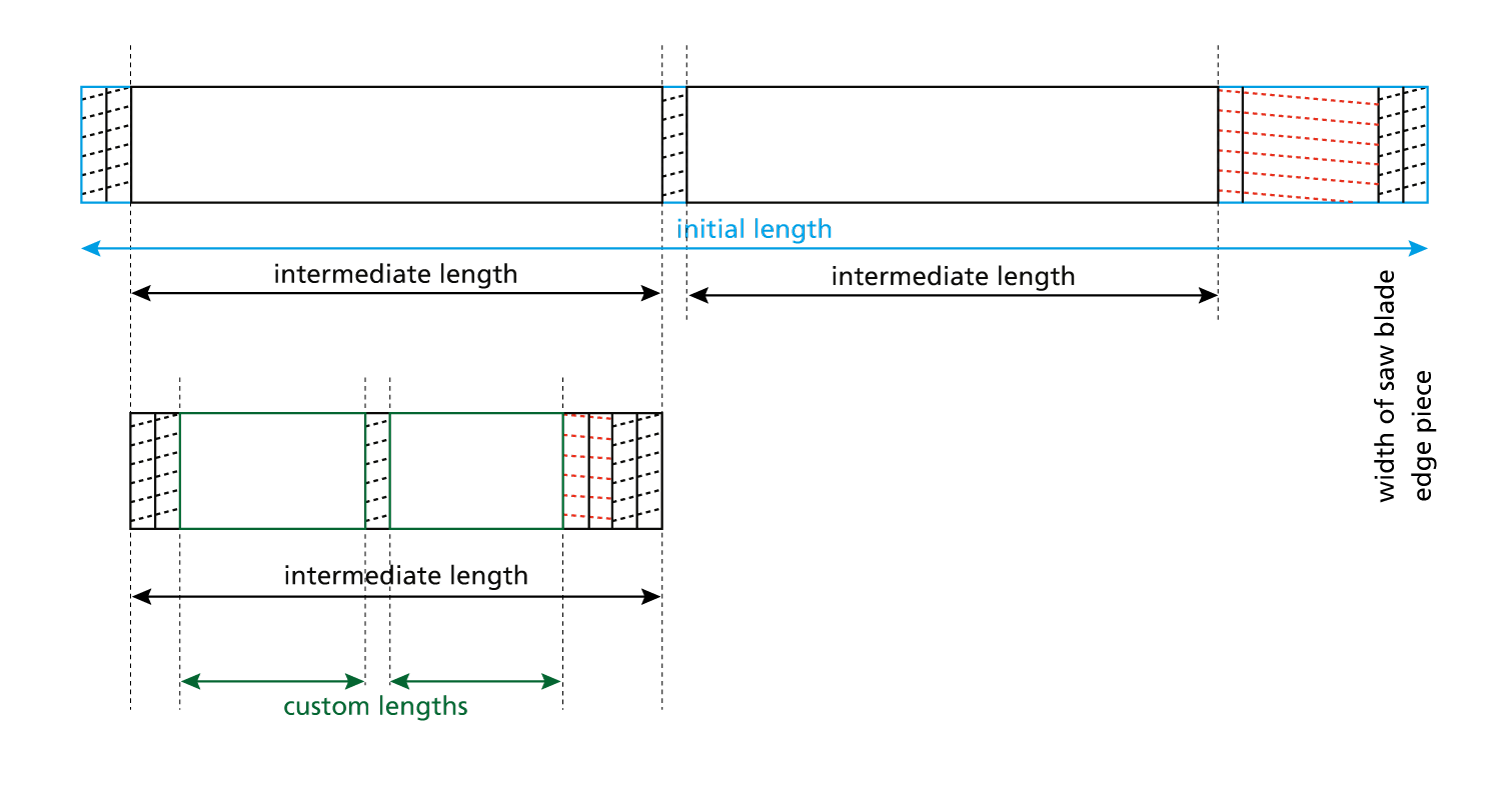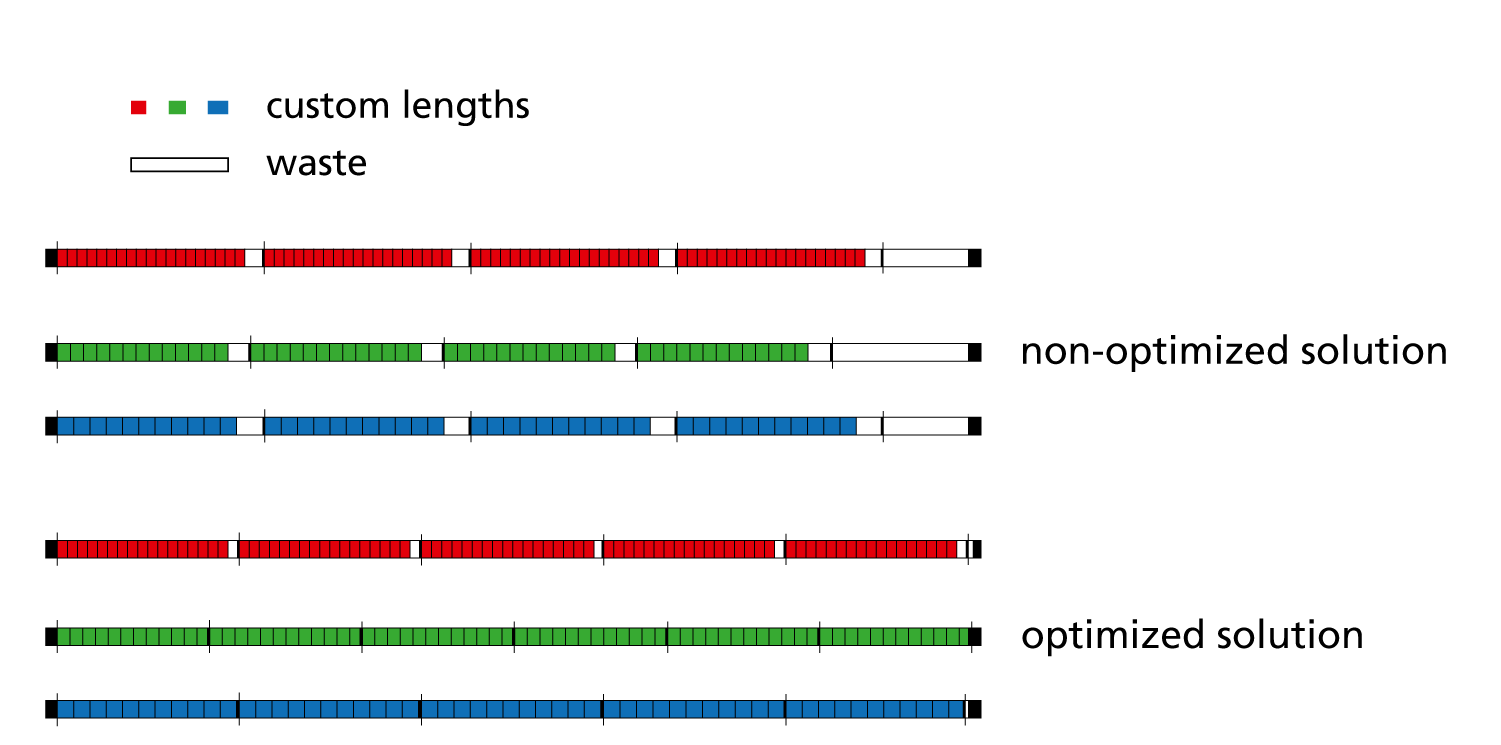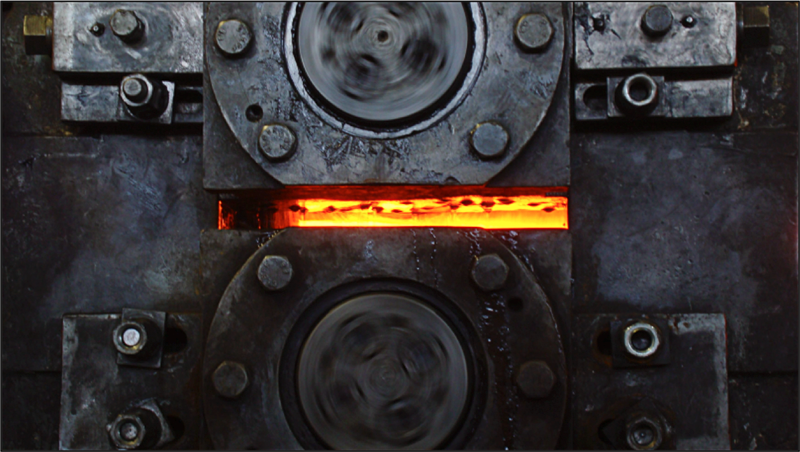
Fraunhofer SCAI developed innovative methods for reducing waste metal during the cutting process of profiles in cooperation with a manufacturer of hot-rolled steel profiles. On the one hand, the software calculates optimal sawing plans for day-to-day business according to the stored length and the customer order; which calculations take less than a minute. On the other hand, it computes production plans for cutting and storing based on the long-term customer orders expected. Hence, the best possible length for production is determined while simultaneously achieving a maximized utilization of material. Our algorithms result in an increased efficiency of several percentage points in the calculation of stored lengths and even the overall optimum in sawing plans.
After this project, SCAI has developed the software AutoBarSizer, which generates optimized layouts for the cutting of stock items, namely steel profiles (metal beams) and other bars and rods, into shorter pieces.


